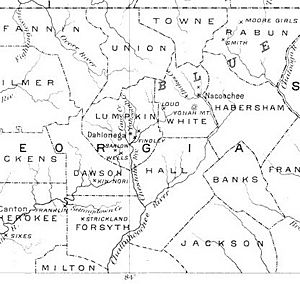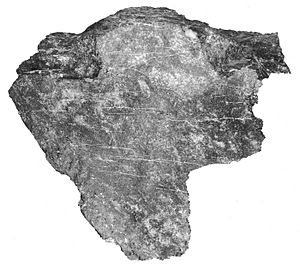Georgia Gold Belt facts for kids
The Georgia Gold Belt is a special area in the southeastern United States. It stretches from eastern Alabama to Rabun County, Georgia. This region holds the largest amounts of gold ever found in the eastern U.S. People discovered a lot of gold here in 1828, which started the famous Georgia Gold Rush!
Contents
The Georgia Gold Belt: Where Gold Shines!
What is the Georgia Gold Belt?
The Georgia Gold Belt is a long strip of land where lots of gold was discovered. It goes from eastern Alabama through Georgia. The most gold was found in White, Lumpkin, and northern Cherokee counties in Georgia.
The gold found in this area was very pure. It was almost 24 karat pure, which means it was nearly 100% gold! Most of this gold was found in eroded rock, called saprolite. It was also mixed in with a common mineral called quartz.
How Was Gold Found Here?
Besides gold found in eroded rock, gold was also found in quartz veins. These are like thin cracks in rocks filled with quartz and gold. The most profitable veins were found in the Dahlonega area. They were located where mica-schist rocks met granite or diorite rocks.
The Georgia Gold Rush
The discovery of gold in the Georgia Gold Belt in 1828 led to the exciting Georgia Gold Rush. This event brought many people to the area, hoping to find their fortune. Two historic cities, Auraria and Dahlonega, grew quickly because of the gold discovery.
Dahlonega even had a special branch mint of the United States Mint. This mint made gold coins right there in Georgia! It operated until 1861. The Georgia Gold Belt is part of a larger area of gold deposits. This area stretches across the southeastern United States, all the way from Alabama to Virginia. Smaller gold deposits can also be found further north.



